Leonardo da Vinci was a polymath who was a painter, draughtsman, engineer, scientist, theoretician, sculptor and architect
Although his fame was initially based on his achievements as a painter, he also became known for his notebooks, in which he made drawings and notes on a variety of subjects, including anatomy, astronomy, botany, cartography, painting and paleontology.
Leonardo’s genius epitomized the humanist ideal of the Renaissance, and his collective work constitutes a contribution to later generations of artists matched only by that of his younger contemporary, Michelangelo. Leonardo is among the greatest painters in the history of art and is often credited with being the founder of the High Renaissance
Despite having many lost works and less than 25 major works attributed to him – including numerous unfinished works – he created some of the most influential paintings in Western art, such as the world-famous“Mona Lisa” or“The Last Supper“.
In this article we have selected 10 of his most emblematic works of art
1- Mona Lisa

The Mona Lisa (Gioconda) is a half-length portrait by Italian artist Leonardo da Vinci. It is considered an archetypal masterpiece of the Italian Renaissance.
It has been described as “the best known, the most visited, the most written about, the most sung about, the most parodied work of art in the world” The painting’s novel qualities include the enigmatic expression of the subject, the monumentality of the composition, the subtle modeling of the forms, and the atmospheric illusionism.
The painting has been definitively identified as depicting the Italian noblewoman Lisa Gherardini, wife of Francesco del Giocondo
It is painted in oil on a panel of white poplar from Lombardy. Leonardo never gave the painting to the Giocondo family, and it is later believed that he left it in his will to his favorite apprentice Salaì
It was believed to have been painted between 1503 and 1506; however, Leonardo may have continued to work on it until 1517. It was acquired by King Francis I of France and is now owned by the French Republic. It has been on permanent display at the Louvre in Paris since 1797.
The Mona Lisa is one of the most valuable paintings in the world. It holds the Guinness World Record for the highest insurance valuation of a painting in history, at $100 million in 1962 (equivalent to $870 million in 2021).
After the French Revolution, the painting was moved to the Louvre, but spent a brief period in Napoleon’s bedroom at the Tuileries Palace. The Mona Lisa was not well known outside the art world, but in the 1860s, a part of the French intelligentsia began to acclaim it as a masterpiece of Renaissance painting. During the Franco-Prussian War (1870-1871), the painting was moved from the Louvre to the Arsenal de Brest.
In 1911, the painting remained unpopular with the lay public. On August 21, 1911, the painting was stolen from the Louvre. The painting was first missed the next day by the painter Louis Béroud. After confusion over whether the painting was being photographed anywhere, the Louvre was closed for a week to investigate. French poet Guillaume Apollinaire fell under suspicion and was arrested and imprisoned. Apollinaire implicated his friend Pablo Picasso, who was brought in for questioning. Both were later exonerated
The real culprit was Louvre employee Vincenzo Peruggia, who had helped build the glass case for the painting. He carried out the theft by entering the building during normal business hours, hiding in a broom closet and leaving with the painting hidden under his coat after the museum closed.
Peruggia was an Italian patriot who believed that Leonardo’s painting should have been returned to an Italian museum. It is possible that Peruggia was motivated by a partner whose copies of the original would significantly increase in value after the painting was stolen.
After keeping the Mona Lisa in his apartment for two years, Peruggia became impatient and was caught when he tried to sell it to Giovanni Poggi, director of the Uffizi Gallery in Florence. It was exhibited at the Uffizi Gallery for over two weeks and returned to the Louvre on January 4, 1914
The thief of the Mona Lisa served six months in prison for the crime and was hailed for his patriotism in Italy. A year after the theft, Saturday Evening Post journalist Karl Decker wrote that he met an alleged accomplice named Edward de Valfierno, who claimed to have masterminded the theft. Forger Yves Chaudron allegedly created six copies of the painting to sell in the U.S. while concealing the location of the original[101]. Decker published this account of the theft in 1932.
2- The Last Supper

The Last Supper (Cenacolo or L’Ultima Cena) is a High Renaissance mural painting, dated ca. 1495-1498
The painting depicts the scene of Jesus’ Last Supper with the Twelve Apostles, as told in the Gospel of John, specifically the moment when Jesus announces that one of his apostles will betray him
Its handling of space, mastery of perspective, treatment of movement and complex display of human emotions have made it one of the most recognized paintings in the Western world and one of Leonardo’s most celebrated works Some commentators consider it pivotal in inaugurating the transition to what is now called the High Renaissance.
The work was commissioned as part of a plan to renovate the church and its conventual buildings by Leonardo’s patron, Ludovico Sforza, Duke of Milan. To allow for its inconsistent painting schedule and frequent revisions, it is painted with materials that allowed for regular alterations: tempera on gesso, pitch and putty
Due to the methods used, various environmental factors and intentional damage, little of the original painting remains today, despite numerous restoration attempts, the last of which was completed in 1999. Located in the refectory of the convent of Santa Maria delle Grazie in Milan, Italy, The Last Supper is his largest work, apart from the Sala delle Asse.
3- Vitruvian Man
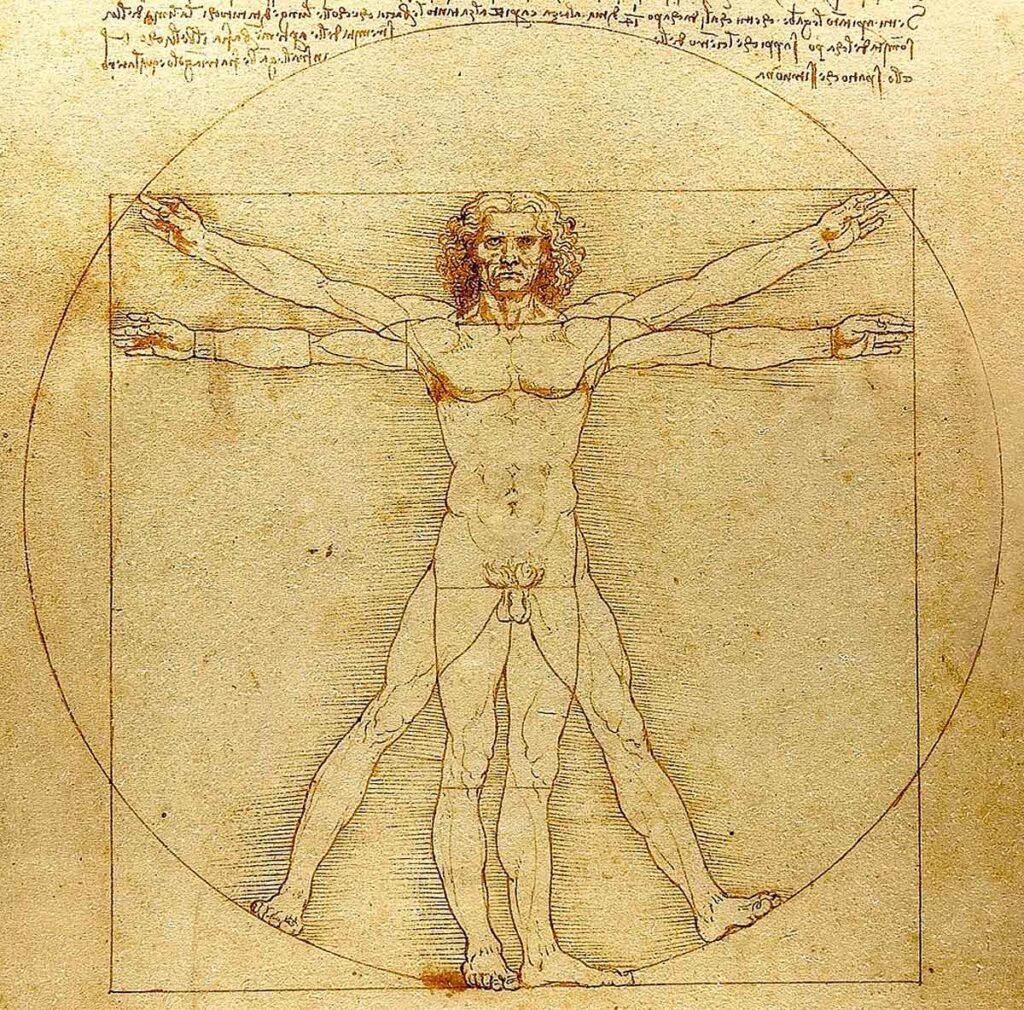
The Vitruvian Man ( L’uomo vitruviano) is a drawing dated around 1490. Inspired by the writings of the ancient Roman architect Vitruvius, the drawing depicts a naked man in two superimposed positions with arms and legs apart and inscribed in a circle and a square.
Described by art historian Carmen C. Bambach as “justly ranked among the iconic images of all time in Western civilization,” the work is a unique synthesis of artistic and scientific ideals and is often considered an archetypal representation of the High Renaissance.
The drawing represents Leonardo’s conception of ideal body proportions, originally derived from Vitruvius but influenced by his own measurements, the drawings of his contemporaries, and Leon Battista Alberti’s treatise De pictura.
Leonardo made the Vitruvian Man in Milan and the work probably passed to his pupil Francesco Melzi. It later came into the hands of Venanzio de Pagave , who convinced the engraver Carlo Giuseppe Gerli to include it in a book of Leonardo’s drawings, which gave wide circulation to the hitherto little-known image. It was later owned by Giuseppe Bossi, who wrote about it, and was finally sold to the Gallerie dell’Accademia in 1822, where it has remained ever since
Because of its sensitivity to light, the drawing is rarely exhibited to the public, but it was loaned by the Louvre in 2019 for its exhibition commemorating the 500th anniversary of Leonardo’s death.
4- Salvator Mundi
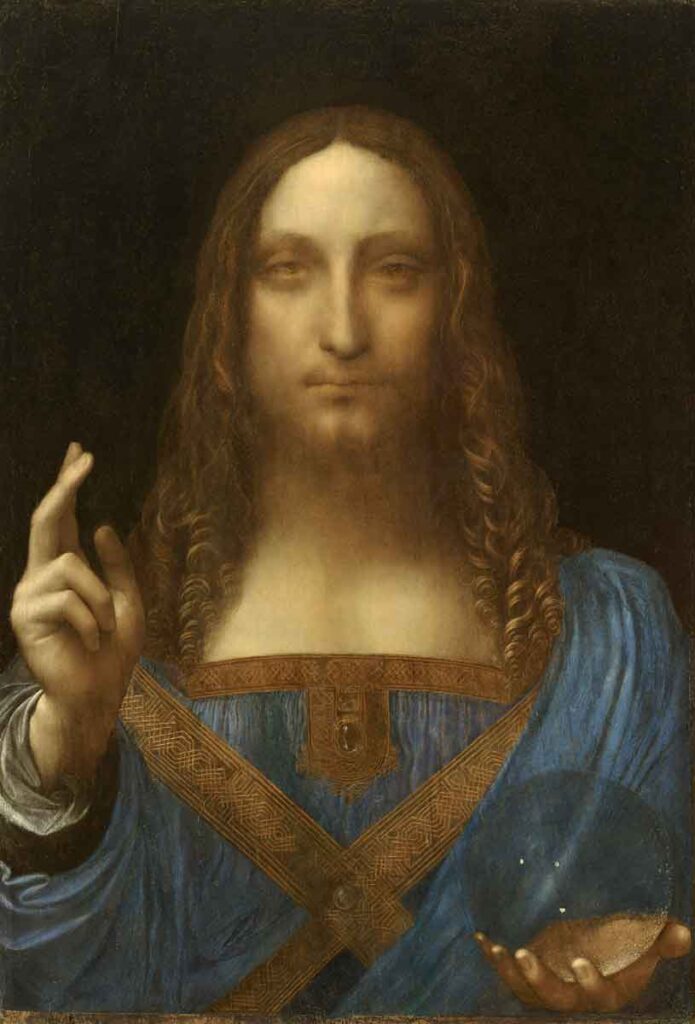
Salvator Mundi (Latin, ”Savior of the World”) is a painting attributed in whole or in part to Leonardo da Vinci, dated between 1499 and 1510
Long thought to be a copy of a lost original veiled with an overpainting, it was rediscovered, restored and included in a major exhibition of Leonardo’s work at the National Gallery in London in 2011-2012.
Christie’s stated just after selling the work that most leading specialists consider it an original work by Leonardo, but this attribution has been disputed by other specialists, some of whom claim that he only contributed some elements.
The painting depicts Christ in an anachronistic blue Renaissance dress, making the sign of the cross with his right hand, while holding a transparent, non-refracting glass orb in his left, signaling his role as Salvator Mundi and representing the“celestial sphere” of the heavens. Some thirty copies and variations of the work by Leonardo’s students and followers have been identified. Two preparatory chalk and ink drawings of Leonardo’s cloth are preserved in the British Royal Collection.
The painting was sold at auction for $450.3 million on November 15, 2017 by Christie’s in New York to Prince Badr bin Abdullah, setting a new record for the most expensive painting ever sold at public auction
Prince Badr reportedly made the purchase on behalf of Abu Dhabi ‘s Department of Culture and Tourism, but it has since been mooted that he may have been a proxy bidder for his close ally, Saudi Crown Prince Mohammed bin Salman. This follows reports in late 2017 that the painting would be exhibited at the Louvre Abu Dhabi and the unexplained cancellation of its scheduled opening in September 2018
The painting’s current location is reportedly unknown, but a June 2019 report stated that it was being stored on bin Salman’s yacht, pending completion of a cultural center in Al-‘Ula, and an October 2019 report indicated that it may be stored in Switzerland.
5- Self-portrait

The red chalk portrait of a man in the Royal Library of Turin is widely, though not universally, accepted as a self-portrait by Leonardo da Vinci. Leonardo da Vinci is believed to have drawn this self-portrait around the age of 60
The portrait has been widely reproduced and has become an iconic representation of Leonardo as a polymath or “Renaissance man“. Despite this, some historians and scholars disagree about the true identity of the sitter.
The portrait is drawn with red chalk on paper. It depicts the head of an old man in three-quarter view, with his face turned towards the viewer. The subject is distinguished by his long hair and long wavy beard flowing over his shoulders and chest. The length of the hair and beard is unusual in Renaissance portraits and suggests, as now, a shrewd person
The face has a somewhat aquiline nose and is marked by deep lines on the forehead and bags under the eyes. The man appears to have lost his upper front teeth, resulting in deepening of the furrows in the nostrils. The figure’s eyes are not directed at the viewer, but look straight ahead, veiled by the long eyebrows
The drawing has been traced with thin, single lines, shaded by shading and executed with the left hand, as was Leonardo’s custom. The paper has brown “fox marks”, caused by the accumulation of iron salts due to humidity.
In 1839, Giovanni Volpato, an antiquarian who may have acquired the drawing in England or France, sold it to Prince Charles Albert of Sardinia along with other drawings by great artists such as Raphael and Michelangelo. It is in Turin, in the Royal Library, and is not usually visible to the public due to its fragility and poor condition.
6- The Virgin of the Rocks

The Virgin of the Rocks (Italian: Vergine delle rocce), sometimes Madonna of the Rocks, is the name of two paintings by Da Vinci, of the same subject, with a composition that is identical except for several significant details
The version generally considered to be the first, the older of the two, has not been restored and is in the Louvre in Paris. The other, restored between 2008 and 2010, is in the National Gallery in London
The works are often referred to as the Louvre Virgin of the Rocks and the London Virgin of the Rocks, respectively. Both paintings are nearly 2 meters (over 6 feet) tall and are painted in oil. Both were originally painted on wood panels, but the Louvre version has been transferred to canvas.

Both paintings show Mary and the Christ child with the infant John the Baptist and an angel Uriel, in a rocky setting that gives the paintings their usual name. The significant compositional differences are in the gaze and the angel’s right hand
The two works differ in many minor aspects, such as colors, lighting, flora, and the way sfumato has been used. Although the date of an associated commission is documented, the full histories of the two paintings are unknown, leading to speculation as to which of the two is earlier.
Two other paintings are associated with the commission: side panels with an angel playing a musical instrument, each by Leonardo’s collaborators. Both are in the National Gallery, London.
7- The Lady with the Ermine

The Lady in Ermine is a portrait attributed to Leonardo da Vinci. The work, dated between 1489 and 1491, is painted in oil on a walnut wood panel. Its subject is Cecilia Gallerani, mistress of Ludovico Sforza (“Il Moro”), Duke of Milan; Leonardo was court painter to the Sforza family in Milan at the time of its execution. It is the second of only four surviving portraits of women painted by Leonardo, the others being Ginevra de’ Benci, La Belle Ferronnière and the Mona Lisa.
The Lady in Ermine is currently housed in the Czartoryski Museum in Krakow and is one of Poland’s national treasures. It is part of the Czartoryski Princes’ Collection, which was sold for €100 million on December 29, 2016 to the Polish government by the Czartoryski Princes’ Foundation, represented by Adam Karol Czartoryski, the last direct descendant of Izabela Czartoryska Flemming and Adam George Czartoryski, who brought the painting to Poland from Italy in 1798.
8- The Virgin and Child with Saint Anne

The Virgin and Child and Saint Anne is an unfinished oil painting dated between 1501 and 1519. It depicts St. Anne, her daughter the Virgin Mary and the infant Jesus
The painting was commissioned as the main altarpiece for the church of the Santissima Annunziata in Florence and its subject had long preoccupied Leonardo.
Leonardo’s painting is at once pleasing, calm and yet confusing on closer inspection. The composition of the three figures is quite tight, with the Virgin Mary clearly interacting with the infant Jesus
Upon closer examination of her position, it is evident that Mary is seated on St. Anne’s lap. It is unclear what significance this might have and what meaning Leonardo intended to project with that pose. There is no clear parallel in other works of art and women sitting on each other’s laps are not a clear cultural or traditional reference to which the viewer can relate
In addition, although the exact sizes of the Virgin Mother and St. Anne are not known, it can be extrapolated from the painting that St. Anne is a significantly larger person than Mary. This subtle but perceptible size distortion was used by Leonardo to emphasize the mother-daughter relationship between the two women, despite the apparent lack of visual clues to St. Anne’s older age, which would otherwise identify her as the mother. The girl holds a lamb
We also see that Mary looks into the eyes of her son, while St. Anne looks at Mary. Since Mary is sitting on her lap and St. Anne is looking at her, it is possible that Leonardo was trying to make a point about their relationship and personalities.
9- Ginevra d’Benci

Ginevra de’ Benci is a portrait of the 15th century Florentine aristocrat Ginevra de’ Benci (born ca. 1458). On display at the National Gallery of Art in Washington, D.C., it is the only Leonardo painting on public view in America.
Ginevra de’ Benci, a well-known young Florentine girl, is universally regarded as the model for the portrait. Leonardo painted the portrait in Florence between 1474 and 1478, possibly to commemorate Ginevra’s marriage to Luigi di Bernardo Niccolini at the age of 16
It most likely commemorates the engagement. Contemporary female portraits were usually commissioned for one of two occasions: betrothal or marriage. Traditionally, wedding portraits were done in pairs, with the woman on the right, facing left; as this portrait faces right, it is more likely to depict the betrothal.
The juniper tree surrounding Ginevra’s head, which occupies much of the background, serves for more than decoration. In Renaissance Italy, the juniper was considered a symbol of feminine virtue, while the Italian word for juniper, ginepro, also plays on Ginevra’s name.
The images and text on the reverse of the panel-a juniper branch surrounded by a laurel and palm wreath, commemorated by the Latin motto Virtvtem Forma Decorat ( “Beauty adorns virtue“)-reinforce the identification of the portrait. The phrase is understood as a symbol of the intricate relationship between Ginevra’s intellectual and moral virtue, on the one hand, and her physical beauty, on the other. The juniper branch, surrounded by laurel and palm, suggests her name. The laurel and palm are the personal emblem of Bernardo Bembo, Venetian ambassador to Florence, whose platonic relationship with Ginevra is revealed in the poems they exchanged
Infrared examination has revealed Bembo’s motto “Virtue and Honor” under Ginevra’s, making it likely that Bembo was somehow involved in the commissioning of the portrait.
The portrait is one of the most prominent in the National Gallery of Art, and is admired by many for its portrayal of Ginevra’s temperament. Ginevra is beautiful, but austere; she has no hint of a smile and her gaze, though directed, seems indifferent to the viewer.
At some point the lower part of the painting was removed, presumably due to damage, and it is believed that Ginevra’s arms and hands were lost.
10- The Scapigliata
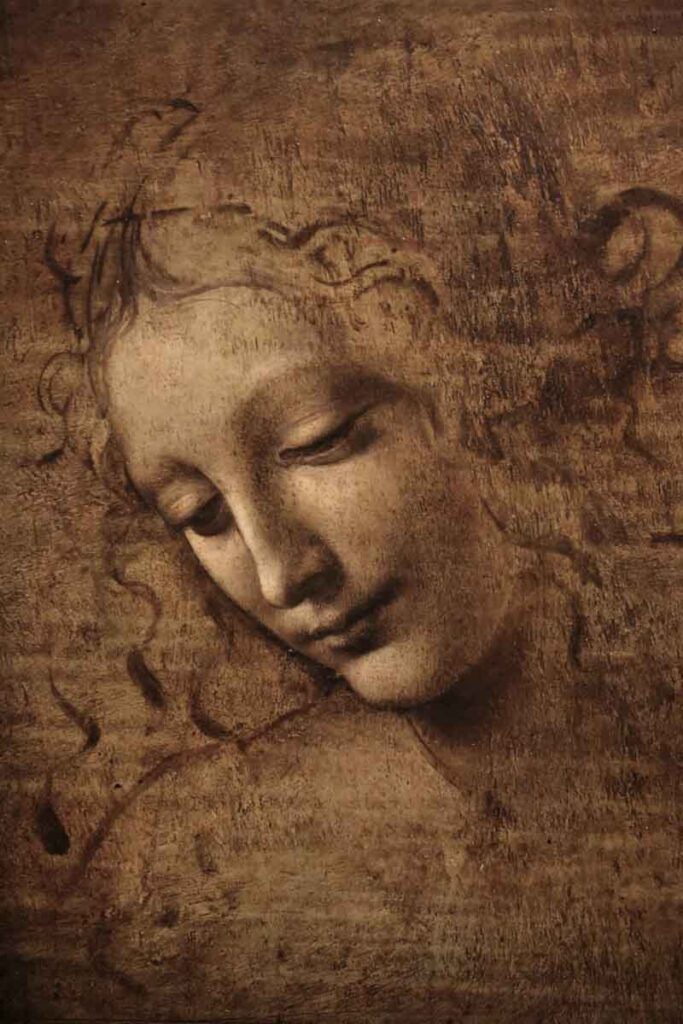
La Scapigliata (Italian for “The Lady with disheveled hair”) is an unfinished painting generally attributed to Leonardo da Vinci and dated between 1506 and 1508
Painted in oil, amber and white lead pigments on a small panel of poplar wood, its attribution remains controversial, with several experts attributing the work to a pupil of Leonardo. The painting has been admired for its captivating beauty, mysterious demeanor and mastery of sfumato.
There is no real consensus on the subject, date, history or purpose of the painting. It shows an unidentified woman looking down as her hair fills the frame behind her. Many theories have been proposed about the subject: that it is a sketch for an unfinished painting of St. Anne; a study for the London version of the Virgin of the Rocks or Leonardo’s lost painting of Leda and the Swan; or a painting deliberately left unfinished for its aesthetic value.
The painting was recorded in the 1826 sale of Gaetano Callani’s collection to the Galleria Nazionale di Parma, the museum in which it is now housed, but evidence of its existence can be traced back to 1531, when it may have been owned by Isabella d’Este
Although many studies of Leonardo’s work are silent on the matter, most scholars analyzing the painting consider it an autograph work by Leonardo da Vinci, and it has been catalogued as such in several major Leonardo exhibitions.
What is your favorite work by Leonardo da Vinci? Leave us a comment
do you like the works of Leonardo da Vinci? Leave us a comment and tell us what is your favorite work of this great artist. Tell us why you like it and what sensations it transmits to you
Here we leave you some articles with compilations of works by great artists of history:

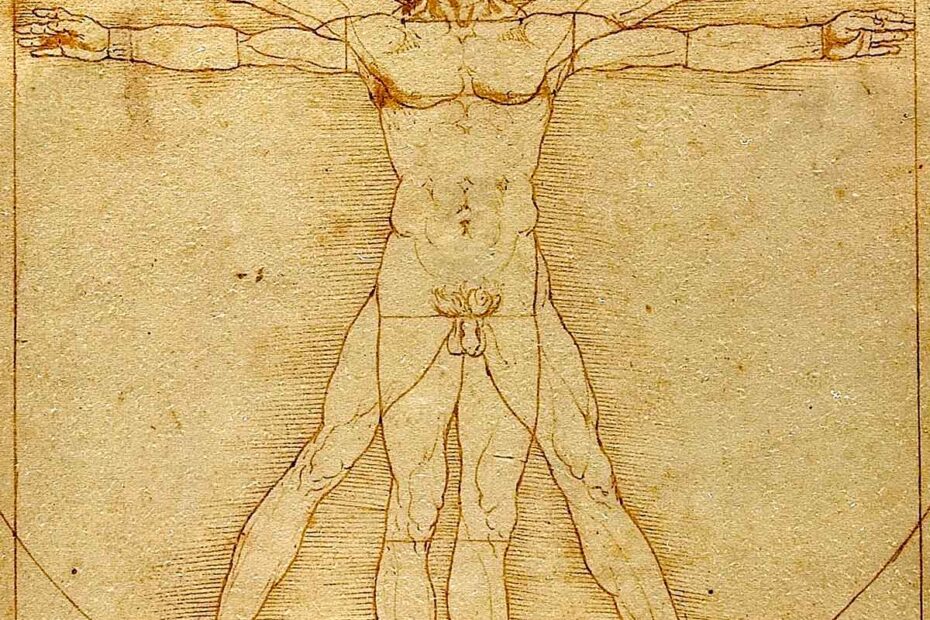
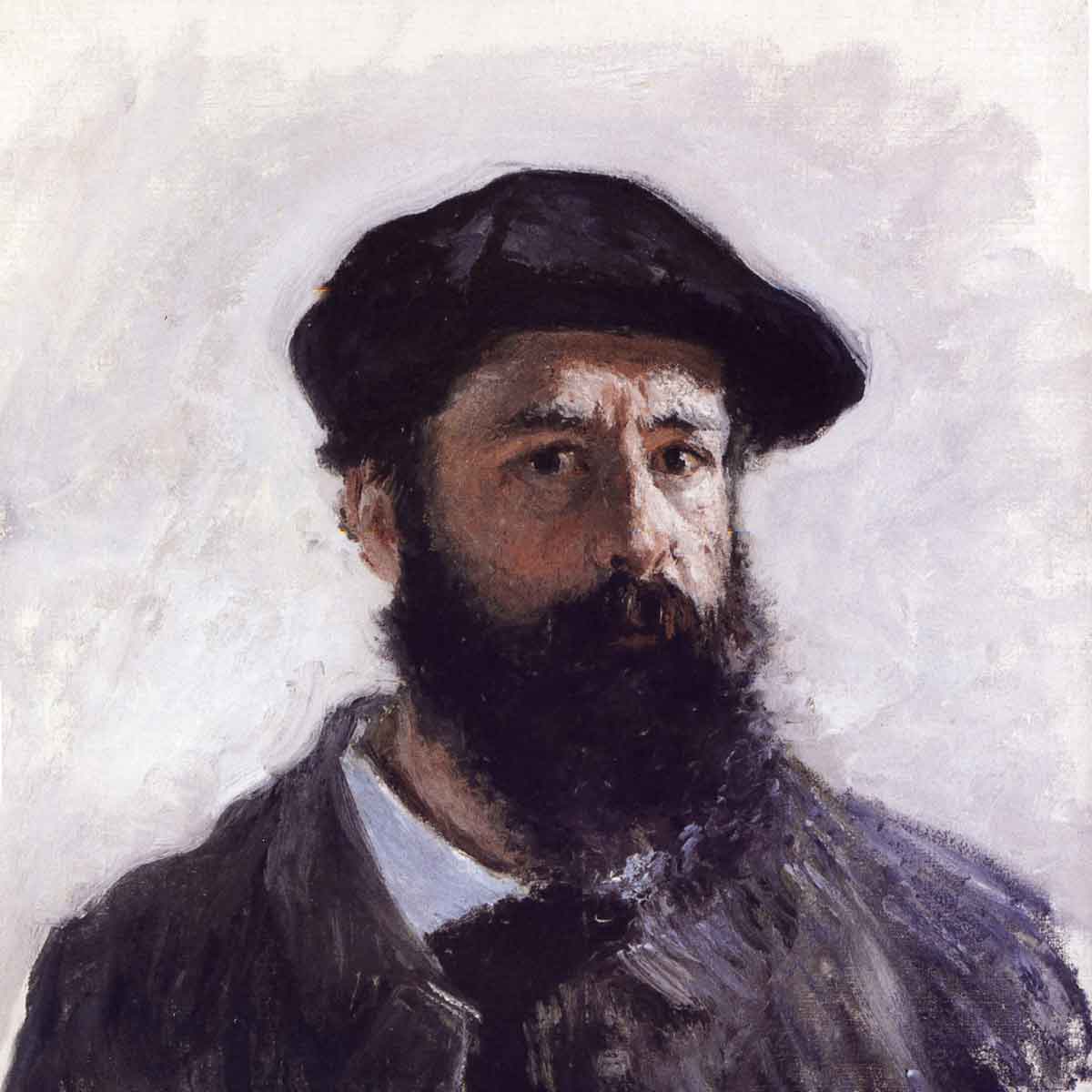
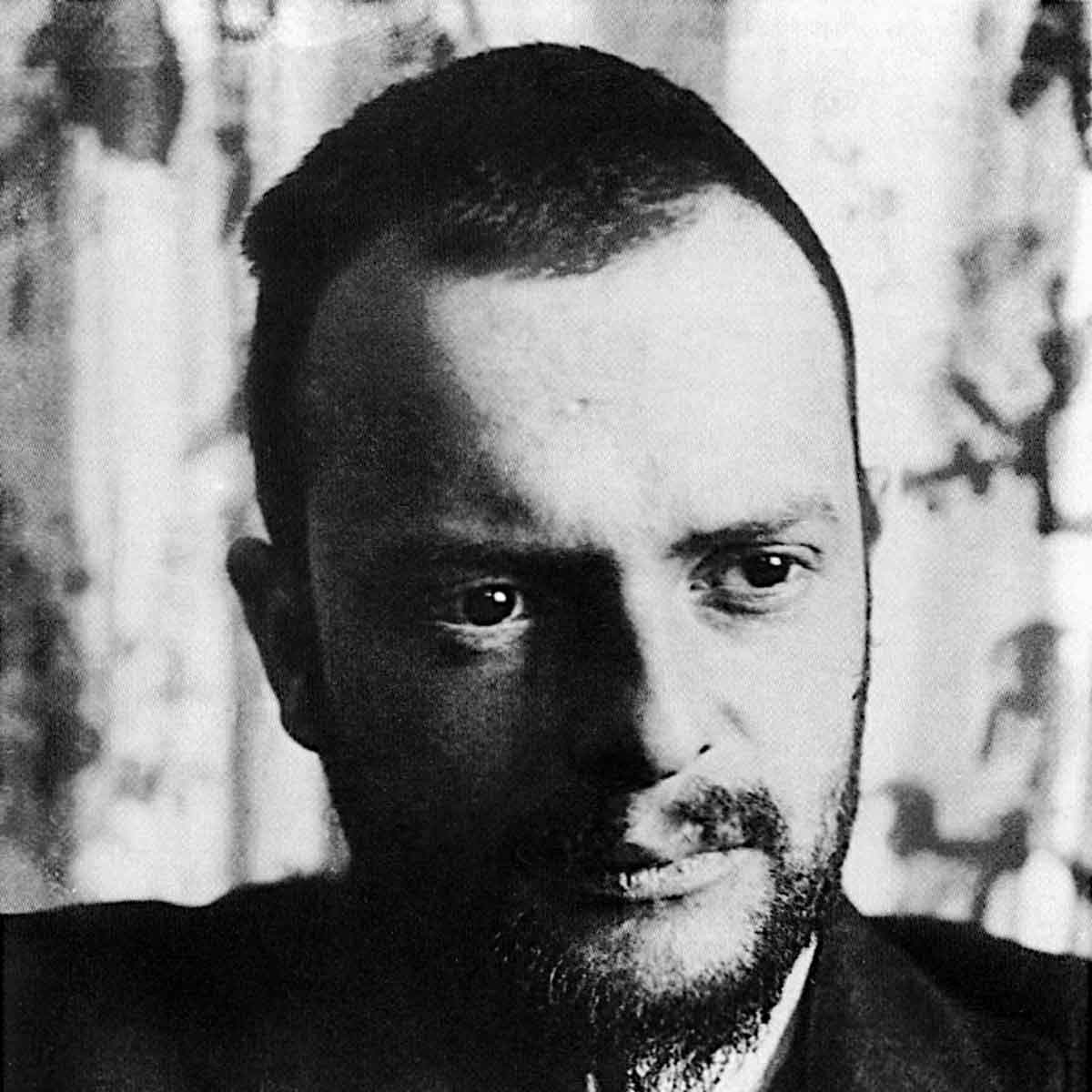

I don’t think The Mona Lisa is anything special at all.